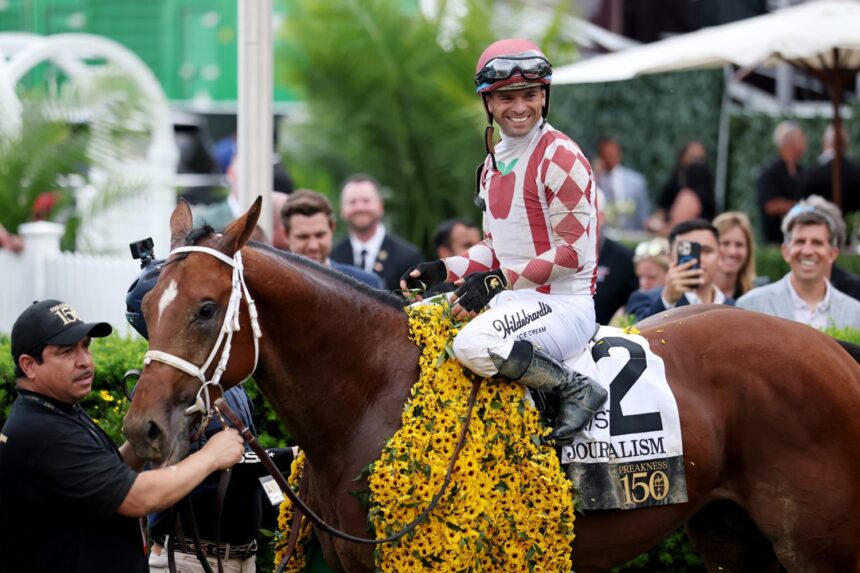Introduction: A Sporting Tradition Amid Economic Turbulence
The Preakness Stakes, celebrating its 150th anniversary at Baltimore’s Pimlico Race Course, is more than just a horse race — it offers a window into the current state of the American economy. With the backdrop of sweeping tariffs and market uncertainty, this iconic sporting event reveals key trends in consumer behavior and economic sentiment.
Economic Impact of Tariffs and Market Volatility
Since President Trump’s sweeping global tariffs took effect in April 2025, dubbed “Liberation Day,” the U.S. market has experienced significant turmoil. The S&P 500 suffered its worst two-day sell-off in years, wiping trillions from the stock market. Major companies like McDonald’s, Walmart, and Amazon report cautious consumers grappling with economic uncertainty.
Maryland’s ambitious plan to demolish and rebuild Pimlico Race Course with a state-of-the-art facility also faces questions about the tariffs’ impact on its half-billion dollar project, illustrating the far-reaching effects of trade policy on local economies.
Declining Attendance and Rising Gambling
- Fewer Fans: Attendance at the Preakness dropped sharply from 131,000 in 2019 to just over 46,000 in 2024, while the Kentucky Derby also saw decreased crowds compared to previous years.
- More Betting: Contrasting with shrinking crowds, gambling on the races has soared, with a record $348,000 wagered on futures well before the horses were finalized—up from $260,000 the year before.
University of Kansas economist Justin Balthrop suggests rising gambling may reflect economic distress, as people take bigger risks hoping for a financial rebound or the dopamine rush of winning.
The Preakness Party and Economic Nostalgia
Despite economic headwinds, the Preakness maintains its festive spirit, known as “the most salacious party in sports,” especially on the lively infield. Traditions like the famed Black-Eyed Susan cocktail and the prestigious Tiffany-crafted Woodlawn Vase trophy connect fans to a deep-rooted history, even as economic realities change.
Maryland’s plan to turn Pimlico into a year-round racing facility aims to revitalize Baltimore’s Park Heights neighborhood, blending tradition with hope for economic renewal.
Personal Perspectives: Betting, Stocks, and Faith in Recovery
Racegoers like Ray De Rubin exemplify the intertwining of personal finance and sporting enthusiasm. Comparing horse betting to stock market investing, he notes the unpredictability of both but remains optimistic despite tariff-driven market volatility.
“Investing and betting on horses is gambling. You have ups and downs,” De Rubin says. Unlike the horses, though, he warns, “you can’t watch the market — it’ll give you a heart attack.”
Conclusion: The Preakness as an Economic Barometer
The 2025 Preakness Stakes reflects a nation balancing between tradition and transformation. Decreasing attendance amid rising gambling underscores shifting consumer confidence during economic uncertainty. Meanwhile, local redevelopment efforts signal hope for economic revitalization through sport.
As tariffs and market volatility continue to shape the American economy, events like the Preakness offer a vivid snapshot of how consumers seek excitement, risk, and community in uncertain times.
For more insights into economic shifts and consumer behavior, read our article on How Tariffs Are Changing American Consumer Spending.
Learn more about global economic trends from the International Monetary Fund’s recent warning on recession.


